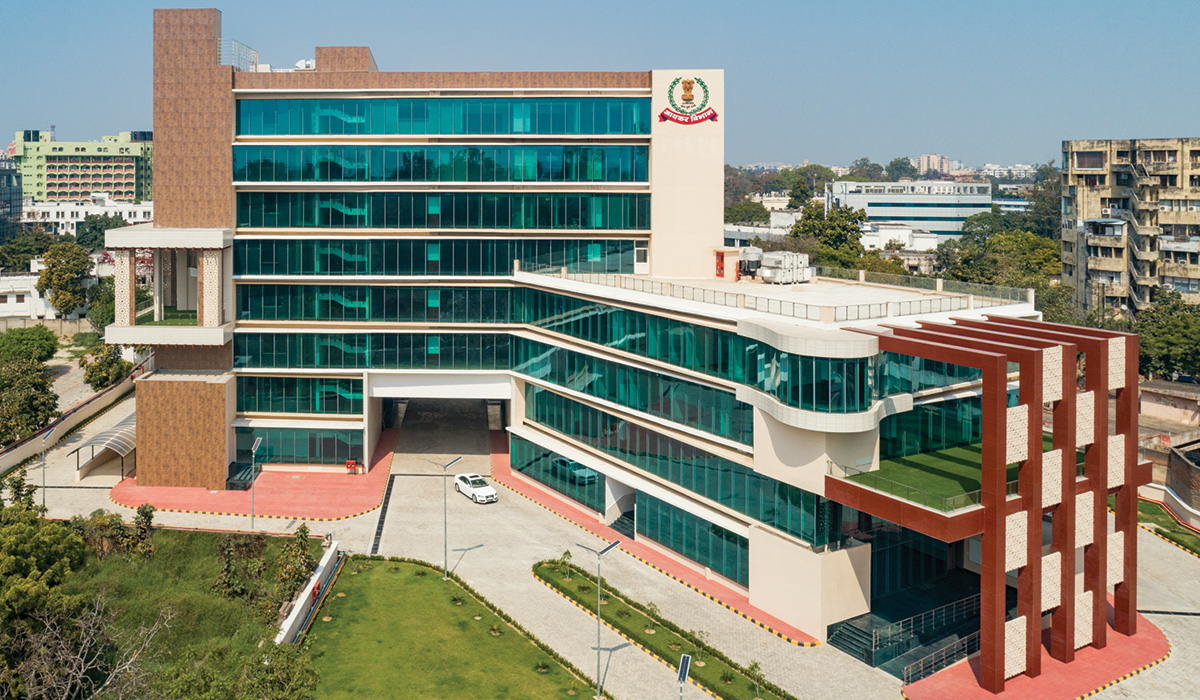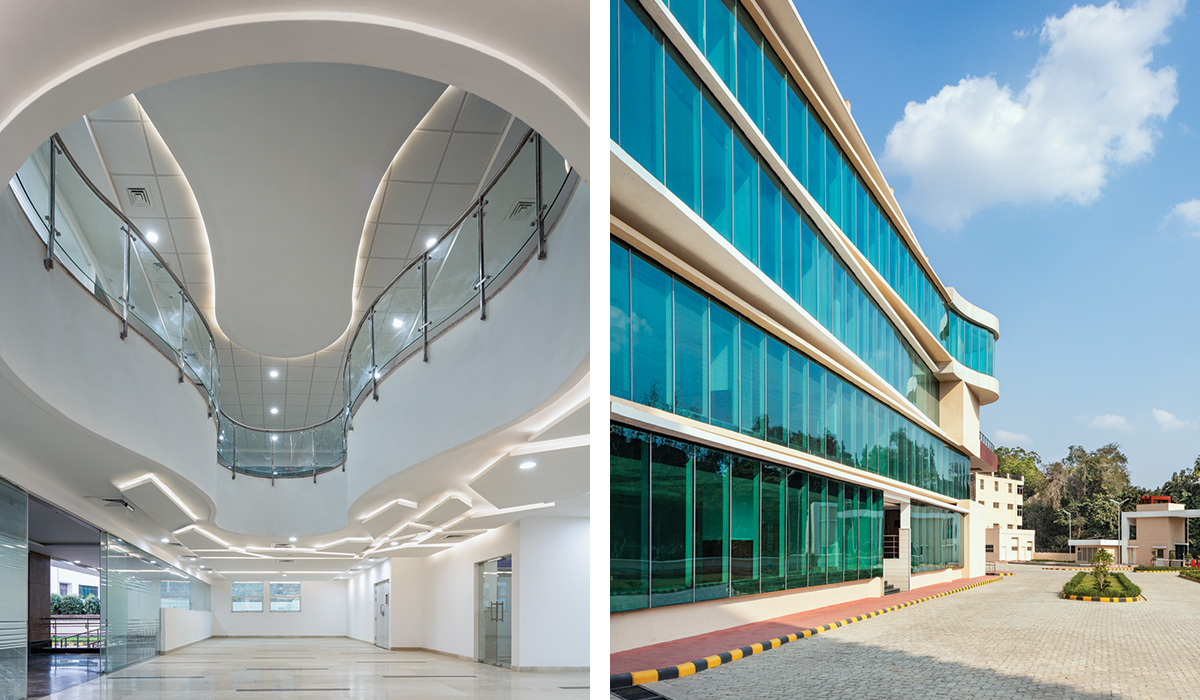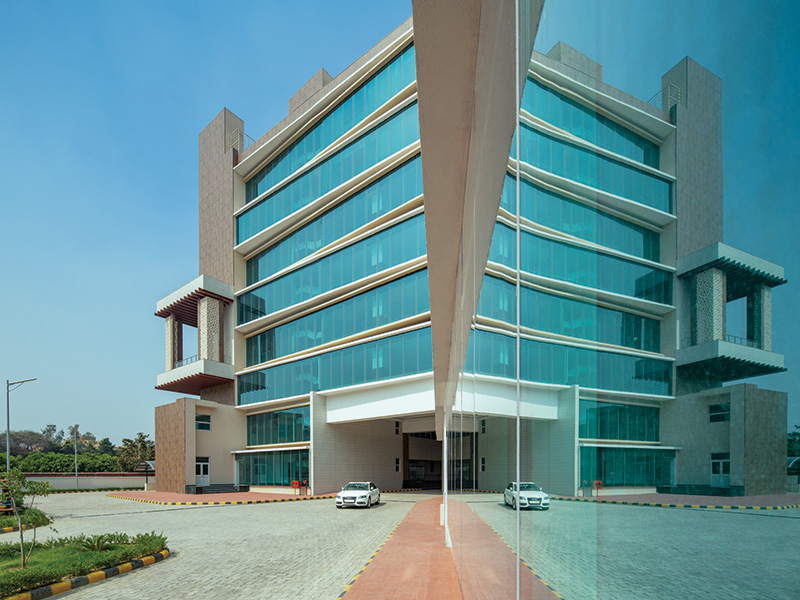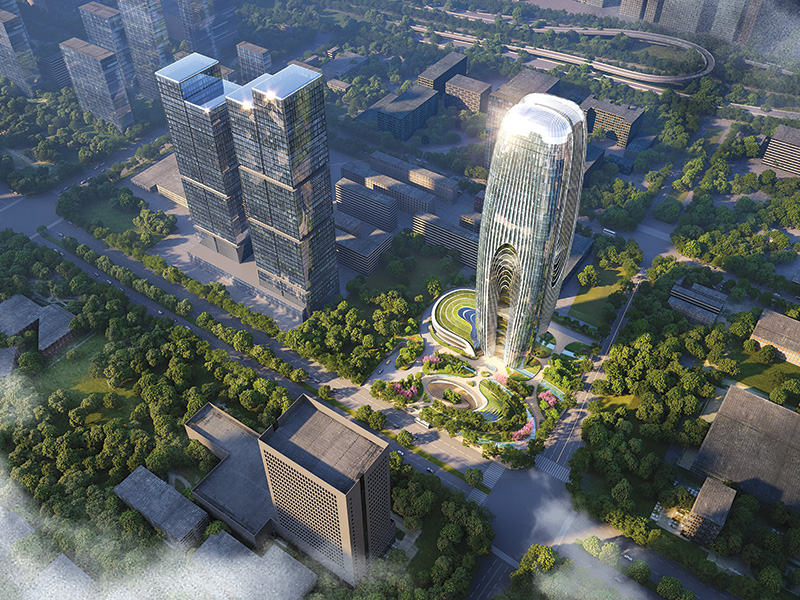Fact File
Name of Client: Income TaxDeveloper: NBCC India
Design Team: Harsh Varshneya, Khushboo Bansal, Anuj Varshneya
Site Area: 8,000 sqm
Built-Up Area: 2,58,000 sqft
Photographer: Andre Fanthome
Products & Vendors
Lighting: PhilipsGlazing: Saint Gobain
External HPL cladding: Merino
Sanitaryware & Fittings: Kohler
Flooring: Armstrong
Air Conditioning: Daikin
Paints: Asian Paints
Elevators: Mitsubishi
Contractor: Classic Engineers
PMC: NBCC India
Civil Works, HVAC: STHAPATI
Plumbing, Landscaping, Façade: STHAPATI
In the bustling heart of Lucknow, where the past gracefully intersects with the present and where the urban landscape constantly evolves, the IT Headquarters for the Lucknow government stands as a testament to innovation and sustainability.

Situated on an irregular plot, the structure, developed completely as a pre-engineered steel building is an architectural marvel that showcases unwavering lines on its facade, creating a visually striking presence in the cityscape. As the structure rises, it defies convention with sweeping bold lines on its facade, making a profound statement amidst the dense urban fabric.
The project stands as a testament to engineering ingenuity with a centrally air-conditioned building concept with two basements, all supported by a pre-engineered steel structure. The columns and beams, manufactured entirely off-site, were carefully erected in a phased and precise manner. The basements, constructed with reinforced concrete, form a robust foundation for the hybrid and composite structure that rises from the ground level, facilitating the steel structures above. This innovation translates to massive time savings during construction.
The culmination of the building’s architectural and engineering efforts is a symbol of progress in architecture, sustainability, and a blueprint for future public/government. projects. Notably, this structure represents one of India’s pioneering forays into pre-engineered steel technology for office buildings, marking a milestone in the nation’s architectural landscape.
Principal Architect: Harsh Varshneya
With sustainability at its core, the Income Tax Headquarters has the prestigious GRIHA 4-star certification, making it a frontrunner in environmental design. During the construction phase, measures were taken to protect existing trees on-site and ensure dust mitigation, cementing the commitment to energy efficiency with a design that reduces pollution in multiple ways.

Off-site steel manufacturing, enabled by pre-engineered technology, minimizes human intervention, bolsters precision, and expedites construction, while reducing environmental impact. Post-construction, the building embraces passive design elements on its facade. Extended slab protections mitigate direct solar heat gain, diminishing the need for air conditioning and consequently reducing carbon emissions, and energy-efficient double-glazed units enhance the building’s overall energy efficiency.

The interior spaces are meticulously crafted to provide a functional and aesthetically pleasing workspace, fostering productivity. The building’s services, including heating, ventilation, and air conditioning systems, are engineered with precision to ensure comfort and environmental sustainability. These systems work cohesively to provide an ideal indoor environment, optimising energy efficiency. The project’s landscape design contributes to its charm by offering an inviting outdoor space within the heart of the city. This green oasis complements the architectural beauty, intertwining nature along the building.
















